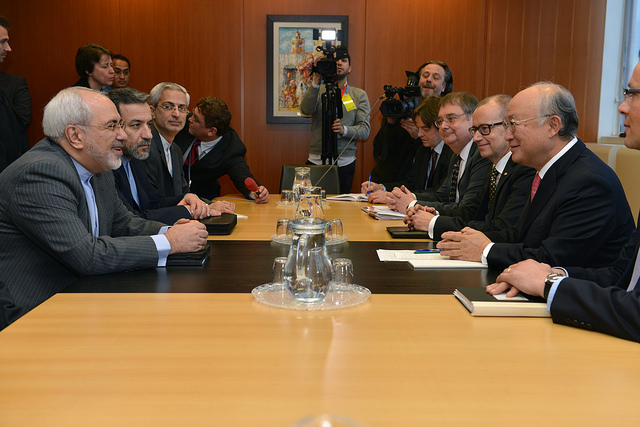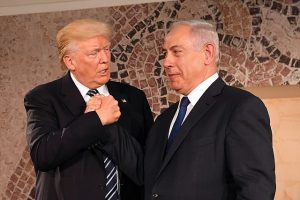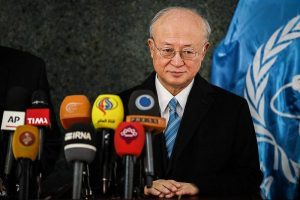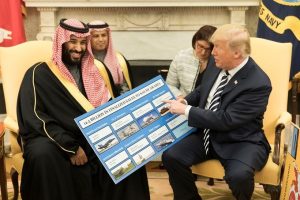by François Nicoullaud
The risk of failure in the ongoing negotiations with Iran over its nuclear program has increased after the most recent meetings in Oman and Vienna. The resolution of the key remaining points of contention—about Iran’s enrichment capacity and, even more problematic, the timetable for lifting sanctions—calls for daring political decisions from both negotiating teams that run counter to the positions of their respective establishments. Moreover, the new majority in the US Congress can at any time adopt additional sanctions that would trigger the collapse of the discussions.
As the prospect for a comprehensive agreement has become more elusive, a lesser compromise has emerged, based on revolving extensions of the present provisional agreement. After all, the Joint Plan of Action adopted on November 24, 2013 offers the United States and its partners inside the P5+1 (the permanent members of the Security Council plus Germany) effective control over Iran’s nuclear ambitions in exchange for a modest alleviation of sanctions. As long as its uranium enrichment activity remains capped at the low rate of 5% and the completion of the Arak reactor is indefinitely postponed, Iran’s two paths to the bomb—through the production of either highly enriched uranium or weapons-grade plutonium—are blocked for good.
Tor Tehran, however, such a deal would mean freezing the development of its nuclear capacities while reducing any hopes of regaining its freedom to make decisions within the framework of a clear and permanent set of rules. Iran will not likely wait passively until the United States makes a series of critical choices: between extending again, or not, the present provisional agreement; inking, or not, a comprehensive and long-term agreement; imposing, or not, new sanctions on Iran; and conducting a military strike, or not, on Iranian nuclear facilities.
Despite the dramatic drop in oil prices and the potential of new sanctions, Iran is not cornered, as its P5+1 interlocutors would prefer to imagine. Tehran can still turn the tables. For instance, Iran could announce its intention to withdraw from the Nuclear Non-Proliferation Treaty (NPT).
As a treaty signatory, Iran is well within its rights. Article X of the Treaty reads: “Each Party shall … have the right to withdraw from the Treaty if it decides that extraordinary events, related to the subject matter of this Treaty, have jeopardized the supreme interests of its country.” Iran could argue that the almost complete blockade imposed on its economy and its population in the name of a supposed “threat to peace” has jeopardized its supreme interests. And of course, new US sanctions would only make things worse. That signatory countries possessing nuclear arsenals are imposing discriminatory measures against a signatory country without nuclear weapons violates the spirit and letter of the NPT.
Iran admitted to and corrected most of the past infractions of its safeguards agreement with the International Atomic Energy Agency (IAEA). Despite thousands of hours of research, numerous IAEA inspectors have also failed to find any “smoking gun” pointing to the manufacture of a nuclear explosive device and the preparation of a nuclear test. Iran could also argue that the P5+1’s focus on the famous “breakout time” makes it clear that the country is still behind the starting line of any race to the bomb. As a result, Iran could conclude that the Security Council had no right to impose the type of sanctions that Chapter VII of the UN Charter permits in response to a “threat to peace”—and that the unilateral sanctions imposed by some of the UN’s most prominent members are even less justifiable.
To present itself as a responsible player, Iran should clearly state that its withdrawal from the NPT would have no influence on the validity of its safeguards agreement with the IAEA and its overall commitment not to build or acquire a nuclear weapon. In accordance with the provisions of this agreement, any Iranian nuclear material placed today under IAEA safeguards would remain subject to exactly the same controls and inspections. All new facilities, such as the nuclear reactors that Russia has agreed to build in Bushehr, would also fall under the same IAEA safeguards.
To alleviate any suspicions, Iran should declare upon withdrawing from the NPT that it would continue to abide on a voluntary basis to the treaty’s provisions by keeping all its nuclear material and facilities, present and future, under IAEA safeguards. Such a move is not unprecedented. France, which joined the NPT only in 1992, issued a statement at the UN in 1968 explaining its reasons for not signing the treaty and its intention, for the sake of non-proliferation, to behave nevertheless like a signatory. At the same time, Iran would make clear that any plan to attack Iranian nuclear facilities placed under IAEA safeguards would jeopardize these commitments. Finally, were Iran to withdraw from the NPT, it should announce its intention to rejoin the treaty as soon as the UN and unilateral sanctions related to its nuclear activities were rescinded.
It is important to avoid any precedent that could undermine the coherence and effectiveness of the NPT. Thus, the risk of Iran’s withdrawal should force the P5+1 to face up to their responsibilities as the main guardians of the treaty. Such a threat could also have a sobering effect on the US Congress and hasten the conclusion of the comprehensive agreement under discussion with Iran.






Iran should withdraw and test a bomb as soon as possible. It seems it is the only way to make peace with greedy west. West only understand the language of the power.
Interesting post. Should Iran withdraw from the NTP? That’s a question that they have to make. I might also add, the U.S. needs to act with caution, not to jump to fast to add more sanctions. After all, just what have those sanctions proved, beside causing the Iranian people to feel the effects, not the so-called intended results that the neocons/Israel want. It’s time to rethink actions, without threats of military action, as Israel is always demanding.
So far Iran has made more concessions than it has received over the past year. Releasing some of their own money generated from selling their own oil held by the western banks illegally is not a favor!
I agree and Iran will withdraw from NPT should there be no time table developed for removing the sanctions as Iran continues to reduce its Nuc capabilities over the same time frame. In the meantime time, Iran should develop its capability of building a bomb just in case the west renegs on its commitment of lifting the sanctions over the agreed upon time frame. Should the west reneg on lifting of the sanctions or impose new illegal sanctions then Iran should test the bomb and earn the respect amongst the nuclear owning club! However, should the west stands by its commitment and lifts all the sanctions within the agreed upon time frame then Iran should inform NPT and the world, explain their rational, and dismantle the bomb with cooperation of NPT agency.
Iran has not made significant concessions, in fact its nuclear program has expended as sanctions have been imposed. Iran has established and maintained its independence.
Iran has long been successful in withstanding the financial assault from the six most powerful countries in the world, thereby becoming more independent and also setting a fine example for others to do likewise most noteworthy in the 120-nation Non-Aligned Movement (NAM) headed by Iran, and the BRICS (Brazil, Russia, India, China, South Africa) which are successfully defying US world hegemony to an increasing extent. Iran is the model for the new multi-polar world.
So why should Iran renounce a treaty and throw in the towel on NPT?
If you remember how North Korean ended up with a nuclear bomb you can identify some similarities. They suspended their nuclear program and blew up one nuclear site in exchange for certain concessions and this happened under Clinton. Once Bush came to power he raised the rhetoric, ended the American concessions and North Koreans promptly withdrew from the agreement, resumed their nuclear activities and tested a device, and today they have anywhere from 12 to 40 nukes. In some ways one wonders if they were intentionally led down that path in order to torpedo any kind of rapprochement or reunification between the two Koreas and to justify the presence of the American bases in the Korean peninsula. Given that the North Korean nukes hasn’t done them a damn bit of good in furthering any of their goals, nor has the world ended now that they have them as we had been warned (not that it’s a good idea for anyone to have nukes), I have always held with suspicion the intentions of a 3rd world, underdeveloped nation to have a nuclear program for anything beyond prestige and as a bargaining chip.
As time goes on the notion that the West is pushing Iran down the same path gains strength with me: Sanctions, fake negotiations, threats of nuclear attacks, denying what the NPT promises in return for not going nuclear, breaking promises and humiliating. The idea seems comical on the surface that the West would actually want Iran to exit the NPT and take the nuclear path while Iran is resisting exiting the NPT and going nuclear! Who would want to be in a treaty that only takes and does not give all the while subject to overt threats of military attacks? But when you look at how the treaty has been a basic one way street of Iran putting itself under the microscope in return for none of the benefits of the NPT (plus the threat of their scientists getting whacked) then you wonder why anyone would subject themselves to that kind of humiliation. This article answers some of those questions. If I am Iran and if my intentions are all that we in the West supposedly “suspect” then there is no way I’d continue this two-way charade. I’d exit the NPT and terminate all cooperation due to lack of good will from the other party. But if I’m Iran and I know the bomb is going to get me exactly what it got North Korea (nothing), then I, too, might choose to remain stuck in the trap I am now and only drag on the process, pretending I believe the process to be sincere, hoping something in the equation changes over time that gets me out of this bind.
Or I could be wrong, that we in the West do indeed plan on ridding the world of all weapons of mass destruction, including the nukes that the NPT obliges all signatory nuclear powers to give up as the main incentive to those non-nuclear nations who signed the treaty, something that has not come close to happening.